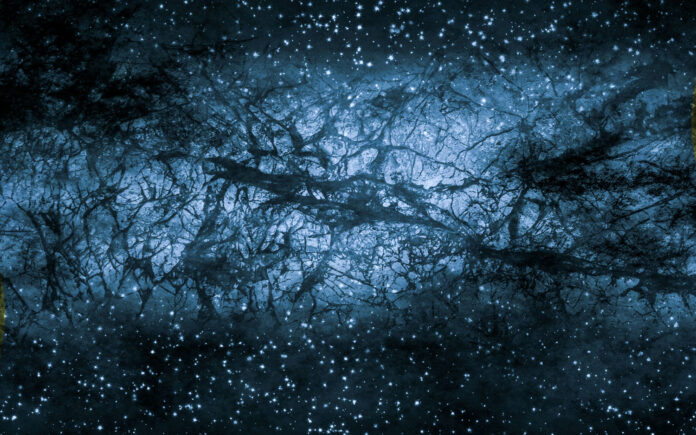The world’s largest and most sensitive dark matter experiment has come to life and is delivering results, moving a step closer to offering clues about one of the biggest mysteries of the Universe.
The LUX-ZEPLIN Dark Matter Experiment (LZ), based at the Sanford Underground Research Facility in South Dakota, US, has gathered its first result – showing the experiment is successfully operating as designed.
The experiment now needs to run for up to 1,000 days to realise its full sensitivity. This initial result is just a fraction of that exposure, which validates the decade-long design and construction effort.
LZ is intricately and innovatively designed to find direct evidence of dark matter – a mysterious invisible substance thought to make up most of the mass of the Universe.
Dark matter is particularly challenging to detect, as it does not emit or absorb light or any other form of radiation.
The LZ detector will try to capture the very rare and very faint interactions between dark matter and its 7-tonne liquid xenon target. To do this, LZ must be carefully and delicately calibrated and any background noise removed so the experiment can be perfectly tuned to observe these interactions.
Today, the international project led by the Department of Energy’s (DOE) Lawrence Berkeley National Laboratory (Berkeley Lab) has announced the detector is running as hoped after years of careful set-up.
Professor Henrique Araújo, from Imperial College London, is the UK lead and co-lead for the development of the LZ Xenon Detector. He said: “An experiment of the scale and sensitivity of LZ can be unforgiving: the smallest design flaw may compromise the whole enterprise. And since the LZ cryostat cannot be opened underground, we needed to make sure we got it right the first time, much like if we were to launch LZ into space… Well, it looks like we did get it right.”
In a paper posted online today on the experiment’s website, LZ researchers report that with the initial run, LZ is already the world’s most sensitive dark matter detector.
After the successful start, full-scale observations can begin with the hope of finding the first direct evidence of dark matter.
LZ involves an international team of 250 scientists and engineers from 35 institutions from the US, UK, Portugal, and South Korea. The UK team, funded by the Science and Technology Facilities Council (STFC), consists of more than 50 people from the universities of Bristol, Edinburgh, Imperial, Liverpool, Oxford, Royal Holloway, Sheffield and UCL and STFC’s Rutherford Appleton Laboratory.
Many of these UK groups came from the ZEPLIN programme, which developed the liquid xenon technology for dark matter searches at STFC’s Boulby Underground Laboratory. The UK ZEPLIN groups then joined the LUX experiment in the USA in 2012 and started designing LZ around that time.
Professor Araújo said: “It’s been a privilege to work in such a fantastic project, full of talented and fun people. The pioneering ZEPLIN programme lives on as the ‘Z’ in ‘LZ’ – but we needed a much larger international team to achieve something on this scale.”
UK deliverables to LZ included the ultralow background titanium cryostat, various contributions to the central Xenon Detector, two calibration sub-systems, and one of the two international Data Centres.
A significant fraction of the very large number of radioassays needed to identify the best materials was conducted in the UK (at STFC’s Boulby Underground Laboratory, and UCL).
LZ Spokesperson Professor Hugh Lippincott, from the University of California Santa Barbara, echoes the comment from Araújo said: “Working across such large distances is always challenging, especially during Covid when we were unable to gather in person. We probably had a few too many Zoom calls, but it was great to see how well people were able to work together, with work passing back-and-forth across the ocean at the beginning and end of each day.”







